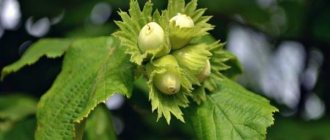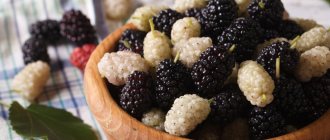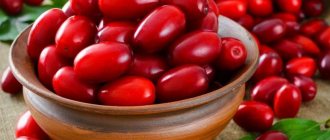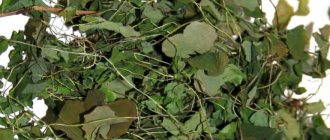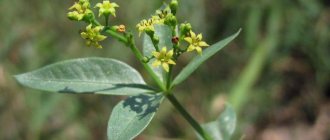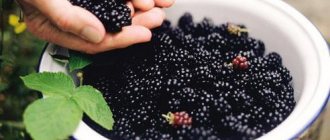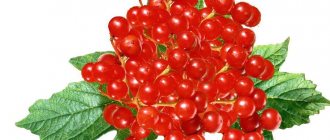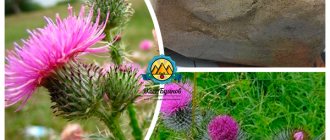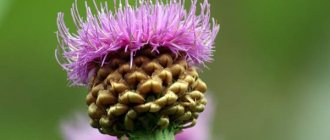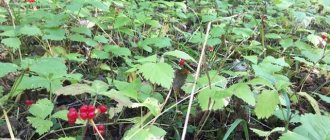Elderberry is a shrubby plant that is often used in landscape design to form hedges, and is also often found growing wild. It is widely used in folk medicine. Flowers, fruits, bark, roots and leaves of the plant are used to prepare medicinal compositions. In addition, elderberry can be used to make desserts and drinks.
Types of elderberry
The elderberry genus, which belongs to the honeysuckle family, includes more than 40 plant species. No more than 10 of them can grow in central Russia. In the northern regions, this plant does not survive due to severe frosts. The most common varieties in Russia are red and black varieties.
Red
Red elderberry was brought to Russia from Western Europe, where this shrub is often found in the undergrowth of forests growing on mountain slopes. This variety can grow as either a small tree or a bush with a wide crown. The height of the shrub reaches no more than 5 m. The leaves are arranged in bunches of 7 pieces. They have an elongated, pointed shape. The flowering period is 18-20 days.
The berries ripen by the end of July. The small fruits have a rich red hue when ripe.
This plant tolerates pruning well and grows quickly in moist soils. The shrub easily tolerates shade. If it grows under a tree, the color of the leaves will be dark green. If it grows in an open space, the foliage will take on a yellowish tint.
Black elderberry
Black elderberry is an unpretentious shrub. Many species of this plant have been bred. Wild varieties can grow on almost any soil and tolerate long droughts and severe frosts. Decorative types of shrubs are more whimsical. The shrub reaches 3-4 m in height. This variety has large leaves. The inflorescences are yellowish-green in color. The berries ripen in early August.
Features of black elderberry
Among the wide variety of elderberry crops, which includes both herbaceous plants and small trees, the chokeberry variety is especially valued. The Latin name of the plant is Sambukus nigra. In many regions, the fruits of this shrub are considered poisonous. The basis for this misconception is the fact that unripe fruits contain substances harmful to the human body, but for them to have a toxic effect, you need to eat a lot of them.
Ripe fruits are not only almost safe, but also have a number of healing properties.
The chemical composition of elderberry may vary slightly depending on the characteristics of the soil in which the bush grows.
Botanical description
The first botanical descriptions of this plant were made back in the 17th century. In most cases, the plant forms a bush, but can also grow as a small tree. It is characterized by rapid growth. In just 3-5 years it can reach 3 m in height. In rare cases, black elderberry grows up to 7 m.
During flowering, the shrub is covered with large inflorescences. Small flowers, characterized by a round shape, are collected in inflorescences in the form of flat brushes. Their color can vary from beige to yellow.
The flowers have a sweet aroma that attracts pollinating insects. After a long flowering period, many fruits are formed. The berries are round in shape. Ripe berries reach 1 cm in diameter. They become juicy. Each of them contains 3 bones.
The root system is not very developed. It is located below the surface of the soil. The roots go deep to about 1 m. The plant reproduces by layering, shoots, rhizomes and even stems. The seeds of the plant are viable. They sprout approximately 2 years after sowing.
Geography and distribution
This plant has good decorative qualities, so its spread has been promoted by people who plant it in gardens and orchards, as well as in park areas. Under natural conditions, the shrub is found in the lower tier of the forest. Elderberry can often be found in deciduous forests near water bodies.
The plant is often found in temperate latitudes. The largest population of this shrub grows in Ukraine and Russia. It can often be found in the Caucasus.
This plant was introduced to the Far East. Thanks to human activity, this plant has spread to Canada, the USA, Japan, China and some other regions.
Composition and properties
The healing properties of elderberry vary slightly depending on the type of raw material. All parts of the plant are used in folk medicine.
The biologically active components contained in this plant are believed to have the following effects:
- diuretic;
- diaphoretic;
- antimicrobial;
- expectorant;
- anti-inflammatory;
- laxative
- sedative;
- vasodilator;
- choleretic.
In addition, the active compounds present in elderberry have a strong antioxidant effect. It is believed that the correct use of products from this plant helps to normalize the functioning of the gastrointestinal tract and improve metabolic processes.
The vitamins and minerals present in the berries of this plant can be effectively used to eliminate vitamin deficiency. The concentration of beneficial substances in different parts is heterogeneous, so different components are used to treat certain diseases.
The fruits are especially rich in healing substances. Their highest content is in ripe black berries. Even dried fruits contain a large amount of active substances. Elderberries contain the following healing substances:
- vitamin C;
- organic acids;
- routine;
- carotene;
- glucose;
- Sambucyanin;
- chrysanthemum;
- tannins.
The flowers contain the following active components:
- essential oils;
- slime;
- routine;
- tannins;
- choline;
- organic acids;
- glucose;
- terpenes;
- carotene;
- vitamin A.
The roots and bark of the plant contain saponins. These substances have a pronounced expectorant and diuretic effect.
In addition, the bark and roots of the plant contain high levels of:
- essential oils;
- phytosterol;
- choline;
- betulin;
- tannins;
- triterpenes;
- pectins, etc.
The leaves also have a high content of active substances, so they are used in the treatment of various diseases. The composition of this plant material includes aldehydes and sambunigrin. In addition, the leaves of the plant contain compounds such as coniine and sanvinar. When these substances enter the human body in large quantities, they can cause paralysis of nerve endings.
Elderberry leaves contain vitamins and organic acids. When used in small doses, products based on this herbal component have an anti-inflammatory effect. Often such compositions are used to treat the skin. The seeds of the plant contain large quantities of fatty oils.
Nutritional value and calorie content
Elderberry can be classified as a dietary product. Approximately 80% of the berries are water. The calorie content of the product is only 73 kcal. Roots, bark and leaves have lower calorie content, which ranges from 12-30 kcal.
Collection and preparation
All parts of this plant have beneficial properties, but the flowers and ripe fruits are of greatest value. The collection of various components of the plant is carried out throughout the year. Flowers are picked in the spring. After that they must be dried slowly, because... This approach will preserve the maximum amount of nutritional compounds in them.
The fruits are collected in August–September. They are suitable for various preparations for the winter, but if necessary they can be dried in the oven. Leaves can be collected throughout the warm season. The bark of the plant is collected in the spring. It is dried. The roots need to be harvested in the fall after the leaves have dropped.
Beneficial properties of elderberry blossom
The healing qualities of elderberry have been known since ancient times and have been used to treat various diseases since the time of Hippocrates. For example, it was believed that inhaling the aroma of the flowers of this plant relieves headaches and relieves depression. A decoction of them was recommended for young mothers to increase breast milk.
Elderberry flowers are endowed with a number of healing properties, which determine their widespread use in the field of medicine.
Thus, this inflorescence is characterized by the following pronounced actions:
- Anti-inflammatory
- Antipyretic
- Sweatshop
- Diuretic
- Expectorant
- Antibacterial
Elderberry flowers can also provide a slight laxative and analgesic effect. In addition, flowers are used to boost immunity, strengthen capillary walls, dilate blood vessels, increase the body's overall resistance, and also to fight various tumor formations. Using this remedy, you can improve the composition of the blood and increase the hemoglobin content in it.
Elderberry color has a beneficial effect on the digestive system, significantly improving the production of bile and gastric juice.
Elderberry also helps to normalize metabolism in the body, as well as cleanse it of waste and toxins.
Chemical composition of black elderberry
Black elderberry is rich in vitamins, minerals and biologically active substances. The berries have a high content of dietary fiber, reaching 7 g per 100 g of raw material. In addition, this plant product is high in carbohydrates and ash. The berries contain unsaturated fatty acids, water and proteins.
Main substances present in elderberry
The most studied fruits are the elderberry, in which a lot of substances useful for the human body have been identified. Micro and macroelements present in this herbal ingredient include:
- selenium;
- calcium;
- magnesium;
- copper;
- phosphorus;
- iron;
- potassium;
- zinc;
- sodium.
The berries are high in vitamins B, C, A and PP. Other compounds are present in the fruits of this plant in smaller quantities.
Useful and healing properties
The benefits of elderberry are due to the content of active compounds in certain parts of it. At the same time, this plant also contains a high content of some compounds that can harm the human body if products based on this plant are improperly prepared and used. Elderberry berries, the medicinal properties of which are recognized even by official medicine, are most often used in the treatment of colds, vitamin deficiencies and pathologies of the gastrointestinal tract. The benefits for these diseases are great.
The use of a berry-based product allows you to quickly suppress existing pathology. This herbal component is also used in the treatment of pathologies and cardiovascular disorders. Elderberry bark, roots and leaves are used to treat skin and joint diseases. Infusions and decoctions of these parts of the plant can quickly suppress the inflammatory process and eliminate other existing manifestations.
Benefits of flowers
Flower-based products help improve vision. They have a pronounced antioxidant effect. Before using elderberry flowers, the beneficial properties and contraindications of this plant component need to be studied in detail, since it includes a large number of active substances. If used incorrectly, such products can cause harm to the human body.
Tannins have an astringent effect, so the use of flower decoctions is recommended in the treatment of stomatitis.
Active compounds present in the inflorescences of this plant help suppress viruses and bacteria. Preparations based on black elderberry flowers have an enveloping effect, so their use has a beneficial effect on the condition of the mucous membranes of the gastrointestinal tract.
Benefits of berries
Eating the fruits of this plant helps improve vision. The active components contained in the berries have a positive effect on blood vessels, reducing their fragility and increasing elasticity. Elderberry berries have a pronounced anti-inflammatory and hemostatic effect.
The consumption of these fruits also has a beneficial effect on the composition of the blood. The mucus and tannins contained in the fruits have a positive effect on the condition of the gastrointestinal tract.
Benefits of roots
The bark and root contain substances that have a pronounced antihemorrhoidal and antidiarrheal effect. These components of black elderberry are often used in the treatment of skin diseases. Products based on these herbal components can be used to eliminate some cosmetic defects. These parts of the plant can be used to a limited extent to eliminate certain pathologies of the digestive system.
Beauty benefits
Eating black elderberry helps saturate the body with nutrients, which has a beneficial effect on the condition of the skin, nails and hair. The fruits are often used to cleanse pores of subcutaneous fat. Masks based on leaves and bark have a drying effect on the skin.
What is the danger?
However, elderberry flowers have both medicinal properties and contraindications. When consuming parts of this tree, you need to be aware of precautions. Elderberry is somewhat toxic and is contraindicated during pregnancy and breastfeeding and should be used with caution by people with diabetes. It is also better for children under twelve years of age not to experiment with this plant.
You should not eat berries or drink elderberry juice in large quantities - this can cause poisoning or, at best, vomiting.
Harm and contraindications
Black elderberry has a lot of contraindications. Its fruits and products from this plant should not be used by people with inflammatory diseases of the gastrointestinal tract. Taking infusions and decoctions of this plant is especially dangerous for Crohn's disease. People suffering from kidney failure should not consume elderberry.
A contraindication for the use of herbal remedies based on this plant is a tendency to allergic reactions. Women should not use infusions and decoctions based on this plant during pregnancy and lactation. Treatment with this plant for children under 12 years of age is not recommended.
If you have chronic diseases, a person should consult a doctor before using products based on this plant to reduce the risk of exacerbations and side effects.
This plant is classified as conditionally poisonous, because It contains sambunigrin and coniine. These are toxic compounds. Eating large quantities of the berries of this plant can cause severe poisoning.
How to collect and store medicinal raw materials?
To prepare medicinal compositions, you need to properly prepare and store individual parts of the plant. During the period of mass dissolution of inflorescences, you can begin to collect them. It is recommended to cut off the inflorescences with the stem. They are characterized by increased meatiness, as they contain a lot of moisture.
The inflorescences should be tied with stems and hung to dry in a cool, well-ventilated area. In such conditions, the raw materials will dry for a long time. This will allow you to retain the maximum amount of nutrients in it. After drying, the inflorescences can be stored for 5 years.
Only mature black fruits are suitable for collection and further harvesting. It is advisable to dry the berries in an oven at a temperature of 60°C. The berries will lose a lot in volume due to the removal of liquid from them, but with this processing they retain most of the beneficial substances. At the same time, it must be taken into account that not all water evaporates during such drying, which negatively affects the shelf life of the product.
It is recommended to store dried berries in a fabric bag in a dry and well-ventilated place. The shelf life of this herbal component is no more than 6 months. In this case, it is necessary to stir the berries regularly. If the slightest sign of mold appears, the fruits should be thrown away.
For further harvesting, you need to take young leaves. You can cut whole branches with 3-5 young leaves. After this, they need to be tied into brooms and hung to dry in the attic or other room where there is air movement, but there is no access to direct sunlight. If desired, the leaves can be dried without branches. In this case, the torn raw materials must be laid out on paper and placed in direct sunlight.
Dried leaves should be moved to a shaded place until completely dry. You can store raw materials in canvas bags and glass jars.
The roots are harvested in the fall, when the maximum amount of nutrients accumulates in them. You need to dig them up carefully. You should not collect more than 2 kg of roots from one bush in one season. They need to be cleaned of dirt and then placed to dry in a well-ventilated area. When the roots are dry, they can be stored in a fabric bag. They need to be washed and crushed before use.
The bark begins to be harvested in early spring, when the movement of juices just begins. It needs to be cleaned from young branches. In this case, it is necessary to ensure that at least half of the bark remains on the branch. Otherwise she will die. The bark should be dried in the shade. Well-dried raw materials should be stored in a glass container or canvas bag. The shelf life of well-dried bark is 3 years.
Pharmacy preparations based on elderberry
Pharmacies sell many elderberry-based products. If desired, you can purchase dried flowers in packages of 15, 40 and 50 g. In addition, syrup is widely popular, which is often used as a general tonic for colds. The syrup produced by Vivasan received especially positive reviews. It is prepared from the flowers and fruits of the plant. In pharmacies you can find dietary supplements in the form of tablets and capsules designed to maintain visual health.
Application in official and folk medicine. Recipes
Official medicine recognizes the medicinal properties of elderberry fruits and flowers. These components are used to obtain extracts and infusions for external and internal use. More often, these compounds are prescribed as general strengthening agents for colds and viral diseases and infectious pathologies of the ENT organs. These compounds are used to a limited extent in the treatment of neuralgia. Rarely, compositions based on the berries and flowers of the plant are prescribed for inflammatory diseases of the urinary tract and kidneys.
All parts of the plant have been used in folk medicine.
Traditional healers prepare infusions, decoctions, lotions and teas based on them. In folk medicine, wine extract, jam, freshly squeezed juice and even seed oil are used.
These recipes are used for a wide range of diseases. Infusions of leaves of flowers and fruits can be used in the treatment of furunculosis, acne and for rubbing joints with arthritis.
Healing compositions based on bark and roots are used for local treatment of affected areas of the skin. They can also be used internally to eliminate signs of atherosclerosis and normalize the functioning of the intestines and bladder. Hemorrhoids are treated with a decoction of the leaves in milk. This product is also used as a lotion for diaper rash and burns. Infusions and decoctions based on elderberry flowers and berries are used in the treatment of colds.
Infusion of flowers for drinking
An infusion of flowers for internal use is used to suppress inflammatory processes and the activity of pathogenic microflora. This product can be added to tea to give the drink a tonic effect. To prepare the product you need approximately 2 tbsp. Place the flowers of the plant in a thermos and pour 500 ml of boiling water.
Infuse the product for 40 minutes. After this, you should drink the healing composition throughout the day. When you have a cold, you should drink the remedy in small sips. In this case, you must adhere to bed rest. To achieve a diuretic effect, the infusion should be drunk within 2 days. Drink ½ glass 3 times a day.
Infusion of flowers for external treatments
An infusion of flowers can be used in the treatment of inflammatory diseases of the external genitalia and for the treatment of damaged skin. Thanks to its pronounced anti-inflammatory effect, this remedy helps to quickly eliminate existing symptomatic manifestations of damage to the skin and mucous membranes.
To prepare this product you need 4 tbsp. Place dried flowers in a thermos and pour 0.5 liters of boiling water. Infuse the product for 20 minutes and then strain. The composition can be used for douching and sitz baths. This infusion should not be used during menstruation.
Laxative infusion of fruits
An infusion based on black elderberry berries enhances intestinal motility, so this remedy is effective in combating chronic constipation. To prepare the infusion you need approximately 3 tbsp. Pour dry berries into a container and pour 200 ml of boiling water. The container with the infusion must be covered with a lid and wrapped in a terry towel. The composition should be infused for 12 hours. This remedy should be taken 1 glass every morning. If necessary, you can add a little honey to the infusion to improve the taste.
Leaves poultice
Poultices based on leaves have a pronounced anti-inflammatory effect. This remedy promotes faster healing of wounds and burns. Poultices can be used both in the treatment of clean wounds and in the treatment of defects complicated by bacterial infection. This remedy can also be used in the treatment of prolapsed hemorrhoids.
To carry out poultices, pour in approximately 3 tbsp. crushed dry leaves 200 ml hot milk. The composition must be boiled for 10 minutes. After this, the product should be cooled and strained. Leaves must be placed on the damaged surface. Such poultices can be done 2 times a day.
Decoction for compresses
To prepare compresses, a decoction based on the roots and leaves of this plant is used. To enhance the effect, you can additionally include chamomile in the composition. This remedy is effective in the treatment of dermatological diseases and joint pathologies.
To prepare a decoction intended for further compresses, you need to pour 50 g of crushed elderberry roots and 10 g of chamomile into 300 ml of boiling water. The composition should be boiled for 15 minutes and then filtered. Soak gauze folded several times in the resulting broth and apply to the affected area.
Tincture for compresses
Elderberry tincture for compresses is used in the treatment of dermatological diseases. To prepare this product you will need 2 tbsp. chopped leaves and 3 tbsp. flowers. Plant components should be placed in a thermos and pour 300 ml of boiling water.
The composition must be infused for 12 hours. The finished product is filtered. Gauze is soaked in it, which must be applied to the damaged areas for 1.5 hours. Such compresses can be used 2-3 times a day.
Healing properties for cancer
If it is necessary to treat malignant neoplasms, you cannot rely on herbal preparations. Elderberry-based formulations can only be used as adjuncts. It is believed that the syrup and ground fruits are effective against prostate and stomach cancer. To prepare cancer syrup, you need to place a 1.5 cm layer of berries on the bottom of a glass jar. It needs to be sprinkled with sugar.
Subsequent layers are laid out in the same way until the container is filled. The last layer should be a layer of sugar. The jar must be covered with gauze and placed in a cool, dark place for 4 weeks. After this, the syrup must be filtered and subsequently stored in the refrigerator. It is necessary to use the product 1 tbsp. 10 minutes before meals. The course of treatment with this drug is 45 days.
Ground elderberry for stomach cancer
For malignant tumors of the stomach, it is recommended to use fresh fruits, ground with sugar in a ratio of 1:3. The composition must be taken 1 tsp. 5-6 times a day. It is best to use the product before meals. This will increase its effectiveness and reduce the risk of adverse reactions. For stomach cancer, this folk remedy can only be used as an addition to complex therapy. Before using elderberry for this cancer, it is recommended to consult a doctor.
Infusion of bark for swelling
An infusion based on the bark can reduce the intensity of edema in a number of kidney pathologies. It is believed that this remedy allows you to quickly remove excess fluid from the body, but does not lead to disturbances in the functioning of the cardiovascular system, incl. blood pressure surges.
To prepare the medicinal product, it is necessary to grind the bark of the bush to a powder state. After this, about 1 tsp. powder should be poured into 400 ml of boiling water. The mixture must be infused in a thermos for 3 hours and then strained. The product should be taken ½ cup 4 times a day. The duration of treatment is 2 weeks. After this you need to take a break.
Benefits for women's health
Elderberry remedies can be used to support women's health. Decoctions of flowers and fruits are recommended for douching for inflammatory diseases of the genital organs. Porridge of berries can be effectively used to eliminate acne that occurs as a result of hormonal imbalances in a woman’s body.
Decoction recipe for treating joint diseases
To eliminate the manifestations of arthritis, you can use a decoction that contains elderberry, nettle and parsley root. To prepare the product, mix these plant components in equal proportions. Approximately 2 tbsp. collection, pour 0.5 liters of boiling water. You need to boil the product for 3-5 minutes. The decoction should be taken ½ cup 2 times before meals. You can store the composition in the refrigerator for up to 4 days, but it is advisable to prepare it fresh.
To relieve joint pain, you can use a decoction of flowers. To prepare the product, pour approximately 1 tbsp. vegetable ingredient 250 ml boiling water. The composition is boiled for 2-3 minutes, and then cooled and filtered. You need to take the decoction 50-70 ml 3 times a day before meals.
Berry syrup for osteochondrosis
Elderberries are used to make syrup. Sprinkle approximately 1 kg of ripe fruit with 300 g of sugar. The mixture should be left for about 3 days. After this, you need to drain the syrup and use it for medicinal purposes. To achieve a positive effect in osteochondrosis, this remedy must be taken 1 tsp. 3 times a day. The active substances contained in the syrup help eliminate inflammation and pain. This remedy helps saturate cartilage tissue with vitamins and minerals, which helps slow down degenerative processes.
Elderberry tincture and extract
The tincture, like the plant extract, is used for many diseases. Tinctures are often used in the treatment of digestive disorders, heart and kidney pathologies. To prepare the product, pour approximately 1 cup of berries into 0.5 liters of boiling water. The product must be infused for 1 hour and then filtered. Take 1 tbsp black elderberry tincture. before eating.
The extract is used for both internal and external use.
The leaves and roots of the plant are suitable for preparing the product. Approximately 150 plant components should be poured into 0.5 liters of vodka. The composition should be heated to a temperature of 60 °C. After this, the product should be moved to a warm place for 2 weeks. After this, the extract must be filtered and used to treat existing pathologies.
Constipation Treatments
There are several elderberry-based formulations that are used to treat chronic constipation. An infusion of the berries of this plant gives a good effect. To prepare it, approximately 10 g of ripe fruits should be poured with 250 ml of boiling water and boiled for at least 10 minutes. After this, the product is infused for an hour. The liquid should be expressed and consumed every day, ½ cup.
A decoction of the bark has a mild laxative effect. Approximately 5 g of raw material should be poured into a glass of boiling water. The composition should be infused in a thermos for 5 hours. The finished product must be filtered and taken 100 ml per day.
Fresh berry extract
Extract from fresh berries allows you to preserve all the healing properties of this plant material. To prepare this product, layers of fruit and honey are placed in a three-liter jar. Each layer should be no more than 1 cm thick. The jar should be tightly closed and left in a dark place for 4 weeks. The drug is used for cancer. Before meals you need to drink 200 ml of water and then eat 1 tbsp. extract.
Longevity drink for diabetes from elderberry
In case of diabetes, drinks based on black elderberry should be used with extreme caution. People suffering from this pathology can benefit from a longevity drink, for the preparation of which you should take 1 tbsp. pour 3 cups of boiling water over the berries and boil the mixture for 5 minutes. The decoction should be left for 10 hours, and then 2 tbsp should be added to it. honey The drink should be consumed ½ glass in the morning on an empty stomach.
Alcohol tincture – black elderberry berries for mastopathy
To prepare a medicinal infusion, you need to mix 1 glass of freshly squeezed juice with the same amount of alcohol. On the first day you need to take 1 drop 3 times a day. Every day the daily dose increases by 1 drop. Take the product until the dose reaches 40 drops. After this, it should also gradually decrease.
Canned elderberry juice for diabetics
Canned juice can be purchased at a herbal pharmacy. To prepare the product, you will need approximately 4 glasses of juice obtained from fresh fruits, mixed with 1 glass of vodka. No sugar should be added. The bottle with the composition should be stored in the refrigerator. The composition should be taken 1 tbsp. 2 times a day.
Elderberry syrup
If necessary, healing elderberry syrup can be prepared at home. To do this, approximately 1 kg of berries should be sprinkled with 200 g of sugar. The berries are left for a day in a warm place. The resulting syrup should be drained and moved for further storage in the refrigerator and use in the treatment of various respiratory diseases and their prevention.
Elderberry jam
Elderberry jam is not a medicinal product, but a dietary product. To prepare the dessert, you should thoroughly wash and dry about 1 kg of berries, and then sprinkle them with 1 kg of sugar. When the fruits release juice, you need to let the mixture cook. Hot jam is poured into sterilized jars and sealed. The jam can be stored in this form for a long time.
Elderberry jam with apples
Delicious jam is made from apples and elderberries. To prepare the dessert you will need:
- berries – 1 kg;
- apples – 500 g;
- honey – 200 g;
- lemons – 2 pcs.;
- cinnamon – 2 sticks;
- pectin – 2 tsp.
Apples and berries are ground to a mushy state. Boiled and crushed lemons are added to them. Cinnamon is added to the composition. Pectin and honey should be dissolved in a small amount of boiling water. A mixture of lemon, berries and apples is added to these ingredients. Cook the mixture for about 15 more minutes. The finished product must be placed in sterilized jars and sealed.
Wine
Wine from the fruits of the plant is used for medicinal purposes and as a dessert. This drink has specific taste qualities. It is recommended to take it for the prevention of respiratory diseases. It helps eliminate anemia.
Folk remedies - wide choice
You can harvest berries and fruits yourself. The flowers are collected and laid out on fabric in the shade in dry and sunny weather. Then it should be transferred to a dry room. When dry, sift through a large sieve and discard the stalks. You can also dry it in an electric dryer. It is advisable to place dried flowers in paper packaging.
The berries are picked fresh, washed only with the stalks, to avoid loss of juice, and juice is made using a juicer. It is very useful and it is advisable to use it immediately. A small amount can be stored in the refrigerator. Add honey to the juice and drink individually from 20 ml. up to 200 ml. before eating.
The fruits are dried in clusters at a temperature of no more than 60 degrees.
Recipe for elderberry jam with apples
- 1 kilogram of elderberries without branches
- 500 gr. apples
- 2 lemons
- 200 gr. honey
- 2 cinnamon sticks
- 2 tablespoons pectin
- Vanilla to taste
Rub the berries through a sieve, after boiling for 15 - 20 minutes. Add boiled and blended lemons to them. Grate the apples and combine with the mixture of berries and lemons. Add cinnamon and vanilla there.
Pour a small amount of water, add honey and pectin, cook until completely dissolved. Combine with other ingredients and continue cooking for another 10 - 15 minutes.
Place the jam into prepared sterilized jars. Seal and hide in a warm place until it cools down.
Remedy for puffiness
Take 25 gr. bark, pour 0.5 l. boiling water Leave in a thermos for 9 - 10 hours. Take a small cup 5-6 times a day. Can be used for swelling, intoxication and colds.
Tincture for compresses
Pour 1 kilogram of berries with five liters of water and cook for 15-20 minutes. When it cools down, add 1 tablespoon of baking soda. This compress should be applied for a short time to avoid an allergic reaction. You can wash wounds and joints.
Fresh berry extract
This recipe is the most popular because fresh fruits retain all their healing qualities.
Place berries and honey in layers in a three-liter jar. Each layer of berries should be about 1 cm thick. Close the jar and leave for 2 weeks to a month. Then the liquid is drained and stored in a cold place.
The medicine is taken as an anti-cancer medicine. Drink 200 grams before meals. water, and after eating, take a tablespoon of medicinal extract.
Elderberry for respiratory diseases and ARVI
Black elderberry has a general strengthening and antiviral effect, therefore it is often used in the treatment of respiratory diseases. The most commonly used are tea and syrup. The plant's fruit extract can be used to reduce fever, because... it has an anti-inflammatory effect.
Berry tea
To brew tea you need to mix 1 tsp. rosehip and elderberry with 2 tsp. currant and strawberry leaves. Approximately 1 tbsp. collection should be poured with 1 glass of boiling water and left for 15 minutes. Elderberry tea should be drunk warm. You can add honey and sugar.
Cough syrup
To prepare an effective cough syrup, mix 1 kg of berries with 0.5 liters of water. The mixture must be boiled over low heat for 20 minutes. After this, you need to strain the composition. 0.5 kg of sugar is added to the liquid. After this, you need to boil the composition again. The finished product should be stored in the refrigerator and taken 1 tsp for cough.
High temperature extract
At high temperatures, pre-prepared extract of fresh berries should be taken 1 tbsp. 3 times a day. The product must be used for 7 days to facilitate sputum discharge.
Tincture for bronchial asthma
To prepare a remedy from black elderberry, which helps reduce the frequency of bronchial asthma attacks, you need to pour 100 g of dried berries with 200 ml of vodka. The product is infused for 3 days and then filtered. The tincture should be drunk 50 drops before meals 3 times a day. It is advisable to dilute it with water.
Jam
Consuming jam from the fruits of this plant helps reduce the duration of the acute period of ARVI. To prepare this product, you will need approximately 1 kg of ripe fruits, crushed to a pulp, mixed with 2 glasses of water and 1 kg of sugar. After this, the composition is boiled to the desired consistency.
Elderberry honey according to an old recipe
To make honey you will need approximately 300 g of elderflower flowers, about 1 kg of sugar and the same amount of water. Additionally you will need 1 tsp. citric acid. The flowers need to be compacted well into a pan, fill them with water and add sugar. The mixture should be infused for 12 hours. After this, it needs to be cooked for 30 minutes. After the broth has cooled slightly, you need to remove the flowers and squeeze them thoroughly. The composition should be placed on the fire again and simmered over low heat for at least 4 hours until it reaches the required consistency.
Useful recipes in different dosage forms
It is possible to prepare various healing remedies from elderberry: there are many recipes for preparing decoctions, infusions, and jam. At the same time, it is important to know which parts of the plant to use, what to prepare from them and according to what regimen to take the medicine. Elderberries are especially often used, which is due to the special medicinal properties of the fruit.
Procurement and storage of raw materials
In folk medicine and modern herbal medicine, all parts of the elderberry are used for medicinal purposes. They are collected, prepared and stored in different ways:
- Berries. The fruits of the plant have the greatest number of beneficial properties. That's why they are used most often. Only ripe berries are suitable for harvesting. They are harvested during the period of full ripening - in August and September. Berries can be stored in the form of jam or dried. You can dry fruits naturally or using dryers or ovens at a temperature not exceeding 60 degrees. Berries are stored in closed boxes for no more than six months.
- Flowers. They are collected during the flowering period (May-June). To dry them, special dryers are used, since under the sun they darken and then quickly deteriorate. The temperature in dryers is set to no more than 35 degrees. Dried flowers can be stored for up to 3 years.
- Leaves. Suitable for harvesting are young leaves, dried naturally in a ventilated area without exposure to direct sunlight.
- Bark. The bark is collected in the spring before the sap begins to flow. Two-year-old branches are suitable for harvesting. The top layer is removed from them and dried at a temperature of 70 degrees.
- Roots. They are collected at the end of autumn and dried. After which the raw material is ground into powder. It can be stored for about 5 years.
It is very important to choose environmentally friendly places for collection - away from roads and railways, plants and factories.
It is best to collect raw materials deep in the forest or in the garden.
Decoction of flowers, roots, leaves and berries
A decoction from different parts of the plant is a useful and therapeutic remedy for many pathologies:
- A decoction of berries helps with diabetes and cancer. It is prepared like this: 50 g of berries are poured into 1 liter of water and the mixture is put on fire. Boiling time is about 15 minutes. Next, the product is allowed to brew (40 minutes) and filtered. Take the medicine one tablespoon three times a day.
- A decoction of the leaves is used to eliminate edema, ascites, as well as to treat gout and rheumatism. Moreover, it can be consumed internally or used externally. A decoction of the leaves with the addition of honey helps with colic.
- A decoction of the roots is extremely beneficial for women's health. It is used for intravaginal douching for colpitis, cervicitis and inflammatory diseases of the female genital organs. The course of treatment begins 3 days after the end of menstruation and ends 3 days before the new cycle.
- A decoction of flowers has a diuretic effect. It is used against swelling.
Infusion of flowers, bark, berries
It is advisable to use an infusion of flowers in the following cases:
- For colds and flu. At the same time, it exhibits anti-inflammatory, expectorant, astringent properties.
- For diseases of the kidneys and bladder (has a diuretic and anti-inflammatory effect).
The medicine is prepared as follows: 1 spoon of flowers is poured with boiling water (300 ml) and left open for about 30 minutes. After straining, the drink can be taken 100 ml three times a day or drunk hot at night to achieve a diaphoretic effect.
Berry infusion
An infusion of the bark helps with swelling and inflammation in the kidneys. To prepare the medicine you will need 5 g of bark powder and water (about 0.5 l). The raw materials should be placed in a thermos and filled with boiling water. Infusion time – 6 hours. You should take half a glass every 4 hours.
An infusion of dried berries is used for constipation. To prepare it, you need to pour 10 g of raw material with boiled water and leave for 3 hours. Afterwards, strain the product and take 200 ml once a day.
Preparing the tincture
The peculiarity of the tincture is its alcohol content. An alcoholic tincture is prepared from elderberries. There are a huge number of different recipes for its preparation. For the classic tincture you will need:
- black elderberry fruits (about 1 kg);
- granulated sugar (0.5 kg);
- high-quality vodka (at least 40% strength) or medical alcohol.
First, the berries are placed in a glass container (for example, a 3-liter jar) and sugar is added. Place the container in a cool, dark place for 5 days. Next, juice is squeezed out of the sweet mixture through cheesecloth. Add about 1 liter of vodka to it and leave for another 3 days. This medicine should be taken in small portions - no more than 20 g per day. It eliminates cold symptoms (cough, runny nose), increases immune defense, helps cleanse the body of waste and toxins, improves liver and kidney function.
Jam, extract, berry syrup
Delicious and healthy delicacies are prepared from elderberry fruits - syrup, extract and jam. They have different indications:
- Jam is most often used to treat colds. It also helps with problems with the gastrointestinal tract. Making jam is very simple. First you need to wash and peel fresh ripe berries. Afterwards they are placed in an enamel bowl and covered with sugar. The proportion of berries to granulated sugar is 1:1. After the juice begins to release from the berries, the mixture is placed on low heat and cooked for about 2 hours. Afterwards, the jam can be consumed fresh or poured into jars and rolled up.
- Elderberry extract has anti-cancer effects. It is prepared like this: place berries and sugar in a glass bowl (layer the ingredients). Next, the dishes are covered with gauze; a lid will not work, since the berries need oxygen. The medicine needs to be infused for about a month at room temperature. Afterwards you should strain the product. Take it three times a day 10 minutes before meals, after drinking half a glass of clean water. The course of treatment is about 6 weeks.
- The syrup is used as a general strengthening and tonic. It is prepared from ripe berries, squeezing the juice out of them and adding melted sugar to it.
Vitamin teas
Healthy vitamin drinks are prepared from the flowers, leaves and bark of elderberry. They are used for preventive purposes. Popular tea recipes:
Elderberry tea
- Dried elderflower flowers are simply added to brewed tea. The result is a tasty, aromatic and healing drink. It helps cope with the negative symptoms of a cold - eliminates cough and runny nose, relieves inflammation in the throat.
- Elderberries are mixed with rose hips in equal quantities and poured with boiling water. This remedy is of great benefit, especially for strengthening the immune system.
- The leaves and bark of the plant are also suitable for preparing a vitamin drink. The dried raw materials (2 teaspoons) are crushed and filled with cold water. This mixture should be boiled, then strained and drunk throughout the day. This remedy is recommended for use when urinary retention is accompanied by swelling.
See also:
Dandelion root - beneficial and medicinal properties, contraindications and harm

